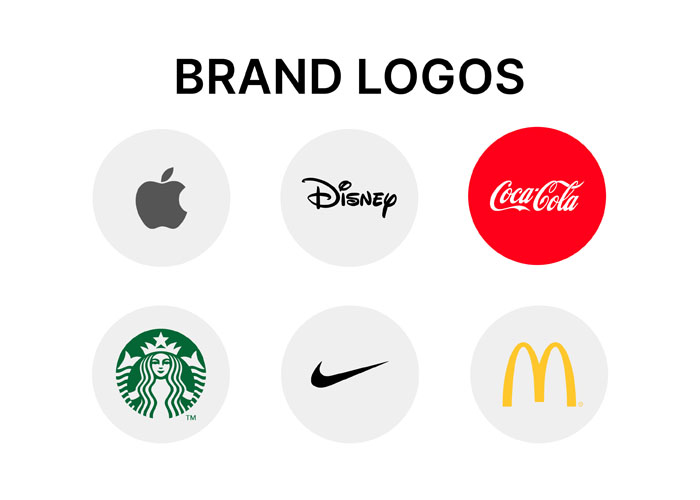
For the sake of your business, it is imperative to invest in a quality logo.
A disjointed or unidentifiable logo will deter users from placing trust in you and may even prompt them to seek out an alternative provider.
A great logo will be a powerful tool to increase customer loyalty, retain customers, and generate revenue.
A company’s logo tells consumers about its uniqueness, mission, and values. For example, a green logo conveys a commitment to sustainability.
A well-designed logo also tells consumers about the background of a company. It can convey the company’s commitment to a particular cause or show superiority.
In this blog, we will discuss the significance of logo designing services for your business.
Investing in a logo design

Investing in a logo design for your business is an excellent way to build your brand image.
However, if it is not done properly, the wrong impression may be given about your business.
Hiring a professional designer can help you create the perfect brand identity and ensure a good return on your investment.
The logo of your business should portray the same values and characteristics as the brand name.
It should also incorporate your company’s colours and render trademark rights.
Your logo can be used anywhere and can communicate the essence of your company.
A well-designed logo can help your business stand out from competitors and build trust among your customers. Hence, investing in a logo is an investment that yields huge returns.
A logo is the first contact people have with your business.
The logo should be powerful and command attention. It should be clear and easy to understand to set your company apart from your competitors. Many great brands have logos designed by a professional, such as Nike, Apple, and XBOX.
Professional logo designers such as Burkhart can design logos that are unique, creative, and memorable.
Communicating a brand’s values

Developing and communicating a brand’s values is an essential part of brand strategy. These values should be honest and should guide behaviour throughout the business.
These guiding principles should be communicated internally to employees and reflected in all marketing materials.
Communicating a brand’s values is also essential to establishing customer loyalty. It gets to the core of a business and helps a business connect with customers.
Brand values also help a company build a culture. Companies with strong values attract team members who share similar ideals.
Ultimately, these employees will be more engaged and invested in the business’s success.
Brand values are the core of any business. They must be defined, embraced, and embedded in the company’s daily operations.
In a recent Future of Commerce study, 41% of brands plan to make their values public. While this might seem like an obvious step, it’s often not as easy as it sounds.
The process of communicating a brand’s values varies from brand to brand. Whether a brand successfully communicates its values will greatly affect its reputation, trust, and loyalty.
Creating a visual depiction of a company’s attributes

The use of visual elements in a marketing campaign affects the perception of customers and can convince them to make a purchase.
These elements can range from a postcard to a magazine ad to a web page. All of these items should point in the same direction and convey the same message.
This strategy is also known as visual branding, and it can be a powerful part of an integrated marketing strategy.
Choosing a typeface

Choosing a typeface for your logo can have a big impact on the overall appearance of your logo.
Choose a typeface that looks elegant and sophisticated, whether it is bold or subtle. Choose one that complements your business’s style and reflects your target audience’s preferences.
The typeface that you choose for your logo should convey the brand’s message and values.
You should avoid typefaces that are ambiguous and distracting to the audience. For example, if your business is involved in the finance industry, you should choose a serif typeface to communicate a sense of stability and strength.
For a more modern feel, you may want to use a sans-serif typeface.
Fonts that are easily recognizable and easy to read are ideal for logos. Some of the most widely used fonts are the classics, like Times New Roman and Arial, but you can also choose from a variety of styles that will complement your business’s brand identity.
Creating a distinct and cohesive look

Creating a distinct and cohesive look for your business is crucial for its success. This can be achieved in 7 steps.
First, you must analyze your goals. You will only get somewhere if you are clear about what you want to achieve from your brand.
Once you know your goal, you can start designing your brand.
Colour is one of the most critical factors in defining a brand. It is essential to use a consistent colour scheme for all of your materials.
You can reference Pantone books and hex codes to determine the perfect colour for your brand.
For example, if you are building a website, use a shade of red that is consistent with the rest of your branding.
It would help if you also tried to keep your business identity consistent across different marketing materials, such as business cards, emails, landing pages, social media images, and more.
Having a consistent look across different platforms is crucial for establishing your brand, as it will help you stand out from your competitors.
Using imagery in logos

There are many different ways to use imagery in logos. One of the most common ways to do this is through symbols.
Many symbols have universal meanings and can inspire certain feelings in viewers. Using images can help businesses express their unique brand personality and stand out from competitors.
Using imagery in logos is essential for creating a brand identity.
A red rose, for example, symbolizes passion and love. While this is an obvious choice, the colour can be changed to convey other meanings. Yellow represents friendship, while white stands for innocence and purity. Roses are also delicate and offer timeless beauty. You can also use other types of flowers, such as peonies.
Another way to use the imagery in logos is to make them more memorable. A good logo must catch a consumer’s attention for at least 10 seconds.
This can be accomplished by adding an illustrated icon or modifying the text.
Regardless of how you choose to use imagery, make sure that the artwork you choose is unique and original. Consistent use of imagery can build brand equity.
Another way to use the imagery in logos is to add a symbol of life, such as an owl. This symbol can convey various meanings depending on the nature of the business.
These images can be a visual metaphor for the company’s services.
Using imagery in logos is an essential first step in building a brand.
This step aims to create a memorable symbol that consumers recognize, whether it’s used on the company’s letterhead, on its website, or a product.
The image must be unique and memorable for it to be recognized.
Choosing a colour that improves brand recognition

Choosing a color for a logo is crucial because it helps create brand recognition. It also helps differentiate your company from the competition.
For example, if your company sells coffee, your logo should not be brown.
While it might look good on paper, your target audience might see similar coffee logos everywhere, making it difficult to differentiate your brand from the competition.
To achieve this, consider using a color palette that is unusual and different from your competitors.
One of the best ways to choose a color for a logo is to think about your brand’s personality and target market.
For example, a green logo may convey a sense of peace and happiness, while a yellow logo may suggest a youthful and fun brand.
However, there may be better choices than red if you are trying to market a severe or mature brand.
Grey is another great color for a logo. Grey is an understated color and is strongly associated with professionalism, dignity, and classics.
Grey is also a good choice for startups because it is sophisticated and can convey a hi-tech feel. Choosing a color palette can be overwhelming, but it can help set the direction of your brand’s visual identity.
Colors can also improve brand recognition. Blue and green are neutral colors and can be used in small doses.
However, these are only some of the color schemes you can use. Green is associated with health, nature, and financial growth, while blue is associated with stability and trust.
In addition to being a neutral color, green can help your brand stand out among its competitors.
When choosing a color, it is essential to consider customer expectations and what the audience wants to feel. If you want your customers to recognize your brand more, try to select a color that matches these preferences.
In addition, consider whether the color matches the rest of your logo and competitors.
Colors that help your brand stand out, like purple, can increase brand recognition.
Think about the personality of your brand and its products. Then, choose a color that makes it stand out. These colors will make your logo come to life. If you need help determining which colors suit your company, you can always try using complementary colors.
Using typography in logos
When choosing the fonts for your brand, consider how they will look on various media. Some fonts look great on minor signs but look terrible on big ones.
Consider using a sans-serif font if you want your brand to stand out. This typeface is very clean, modern, and engaging. It also conveys a no-nonsense attitude.
If you need help choosing the perfect typeface for your brand, look at some big brands and see how they have used typography.
For example, Innocent Smoothies’ logo uses typography to promote itself as an environmentally conscious and healthy company.
Choosing the right font is critical in logo design. Proper font for your logo will help it stand out from the crowd and make it more recognizable to potential customers.
However, stick to the industry you’re in when choosing fonts.
The fonts you choose will significantly affect how people react to your brand. It will make them trust your brand more. You may even notice that you have the right message when you see your logo. And while choosing the right font is crucial, you also need to consider the psychology of typography.
While some fonts can make a person feel unprofessional or untrustworthy, others can convey a sense of trust or confidence.
Typography is an essential part of logo design. You can showcase your company’s vision through a simple or abstract design using creative typography.
You can also incorporate color and letter style to express the character of your brand. It adds to your logo’s overall design and the overall feel. Whether you use a simple sans-serif font or a complicated typeface, ensure the typography is easily readable.
Typography can be a double-edged sword if you don’t use it properly. The current trend in type design is to mix and match the fonts in your design.
However, there are better ideas for a brand. The typography of your brand should be consistent throughout all your advertising material.
Dependable Logo Designing Services
Devolper’s logo designing services are a perfect way to depict what your brand exactly is.
Our designers first try to understand your business objectives and depending on your requirements we deliver outstanding results.
As the logo is the face of the brand, and Devolper intends to make it worthy.
